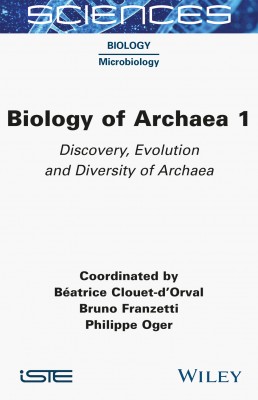
Archaea constitute a new branch of life alongside bacteria and eukaryotes. These microorganisms are unique in their cellular and molecular aspects. They have evolutionary links with the first eukaryotic cells and are now being used to elucidate fundamental biological questions.
Champions of extremophilicity, archaea are helping to lift the veil on the limits of life on Earth. Biology of Archaea 1 explores the discovery and evolution of the field of archaea research.
This book also looks at the evolutionary history of archaea and their integration into the tree of life, and examines this complex and extremely diverse world in terms of their ecological niches and their still largely unexplored virosphere.
1. The Discovery of Archaea, Patrick Forterre.
2. Evolution of Archaea and Their Taxonomy, Patrick Forterre.
3. Archaea and the Tree of Life, Patrick Forterre.
4. Archaea: Habitats and Associated Physiologies, Karine Alain, Marc Cozannet, Maxime Allioux, Sarah Thiroux and Jordan Hartunians.
5. Methanogenic Archaea, Tristan Wagner, Laurent Toffin and Guillaume Borrel.
6. Hyperthermophilic Archaeal Viruses, Diana Baquero, Mart Krupovic, Claire Geslin and David Prangishvili.
Béatrice Clouet-d’Orval is Research Director at the CNRS and works at the Center for Integrative Biology, Toulouse, France. Her main research areas focus on the post-transcriptional regulation of gene expression.
Bruno Franzetti is Research Director at the CNRS, France, where he specializes in the structural biology of archaea. His research areas include biophysical and cellular mechanisms that maintain proteome integrity under extreme conditions.
Philippe Oger is Research Director at the CNRS, France. His research areas include understanding the adaptations of prokaryotes in response to extreme conditions, using a multidisciplinary approach combining the methods derived from atomic physics and cutting-edge molecular biology and modeling.